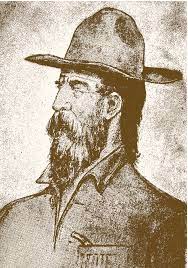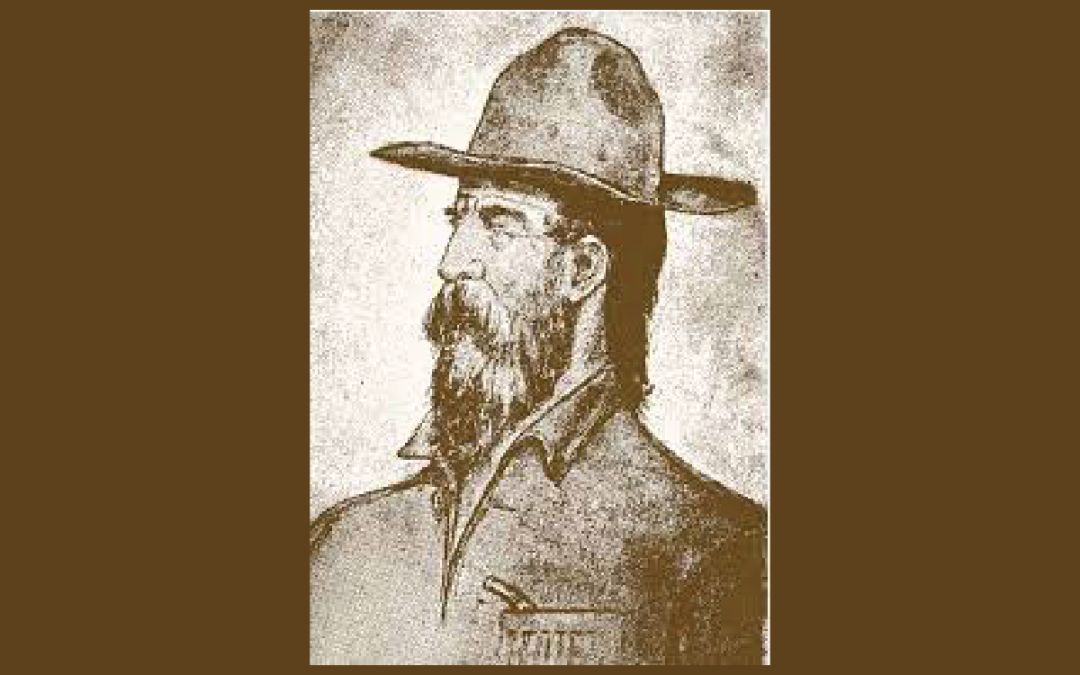
Pauline Weaver: Prescott’s First Citizen
When old Joe Walker, one of the West’s most famous explorers and his party of prospectors arrived at Granite Creek in the spring of 1863, an old mountain man by the name of Pauline Weaver was already camped there. The area was the stomping grounds of the Yavapai Indians, a formidable tribe of warriors but surprisingly, the earliest days of Prescott’s history were relatively free of bloodshed and the credit goes to Weaver.
So what’s a rough and tumble, grizzly-fighting mountain man doing with the name Pauline? His first name was really Powell but when he showed up in New Mexico in the 1830s it was changed to the Spanish Paulino and from there the English Pauline.
Weaver was one of those ubiquitous (besides that he was everywhere) characters who best fits the description of one who never had time to write or narrate early Arizona history—he was too busy making it. He was born in Tennessee around 1800, the son of a white father and a Cherokee mother. For a time he worked for the Hudson Bay Fur Company but preferred warmer climes so he headed for the Southwest. He first arrived in Arizona in the late 1820s and over the next few years established himself as a first-rate mountain man, coming to know Arizona’s mountains, deserts and streams like the back of his hand.
During the Mexican War, General Stephen Watts Kearny, commander of the Army of the West, hired Weaver as a guide for the storied Mormon Battalion on its historic road-building trek along the Gila Trail. Weaver spent the 1850s trapping for beaver along the rivers and streams becoming friendly with most of the tribes who inhabited the area.
On January 12th, 1862, on Day of the Feast of Our Lady of Peace, some of the natives along the Colorado River showed Weaver some rich gold placers and when he showed up in Yuma with goose quills stuffed with tiny gold nuggets the gold rush was on. The town of La Paz was born. It almost became the territorial capital of Arizona.
Sometime later the capricious Colorado River changed its muddy course leaving the town and a couple of steamboats high and dry in the desert. So locals, including Mike Goldwater, grandfather of Senator Barry Goldwater, packed up their belongings and moved to the river. Goldwater named town Ehrenberg in honor of his friend Herman Ehrenberg who’d recently been killed in California. Before the gold played out some 12 million dollars had been panned out.
That same year Weaver hired out as chief of scouts for the Union Army as it was advancing east from California on its way to drive the Confederates out of Tucson. The hard-riding mountain man guided a company of Union cavalry up the Gila River to the Pima Villages at today’s Sacaton. Two detachments of this group headed on to Picacho where they fought a battle with the Confederates in what is called the “Westernmost Battle of the Civil War.”
Weaver was then off to another Arizona Adventure; this time guiding the A.H. Peeples party up the Hassayampa River in search of gold. A few miles north of Wickenburg they stumbled upon a treasure trove of gold nuggets lying atop a rocky hill that they appropriately named “Rich Hill.” It turned out to be the richest single placer gold strike in Arizona history.
The nearby Weaver Mountains are named for him as the legendary Weaver’s Needle of Lost Dutchman Mine fame.
These early prospectors were the first white men to enter the land of the Yavapai Indians and Weaver worked tirelessly to negotiate a treaty between the natives and the newcomers. And he succeeded for a time. Both groups used the password “Paulino Tobacco” which was to indicate to each other they were friendly. Tobacco was a word nearly every Indian knew and understood as it was always given by whites during a parley as a token of friendship.
As more whites poured into the area who weren’t aware or didn’t care about the arrangement the treaty became meaningless. Too many cultural differences and mutual mistrust caused the inevitable outbreak of hostilities. Weaver himself was jumped by a war party outside Prescott and seriously wounded. The old scout thought he was a goner and went into his “death song” a custom he’d adopted from the Plains Indians. The Yavapai, not familiar with the ritual, believed he’d gone crazy and avoided him.
The old scout was too tough to die and when he realized he was all alone, he ceased singing, got up and walked back to his camp. It was said the Yavapai were remorseful about shooting Weaver and during friendly parleys, always asked how “Powlino” was getting along.
Pauline Weaver died on June 27th, 1867 and was buried at Camp Lincoln (Verde) with full military honors. Later, when the post was abandoned his remains were taken to California.
In 1929 poet-historian Sharlot Hall organized a campaign to have Weaver’s remains returned to Prescott. Thanks to the Boy Scouts and Prescott school children funds were raised and Weaver was re-buried on the grounds of the old territorial capital where the Sharlot Hall Museum is located today. At the ceremony Ms. Hall declared him “Prescott’s First Citizen” a title he richly deserved.






